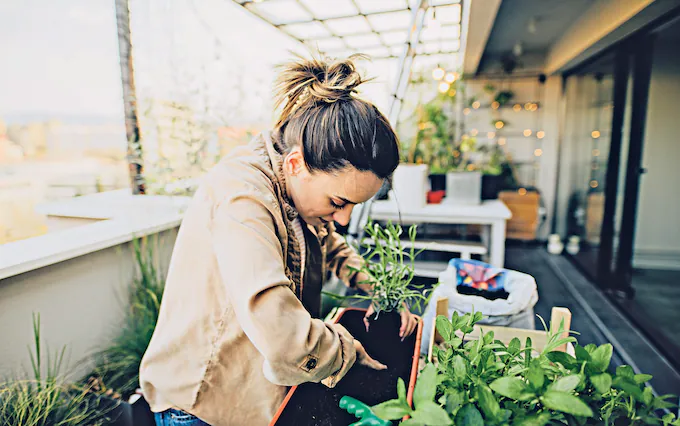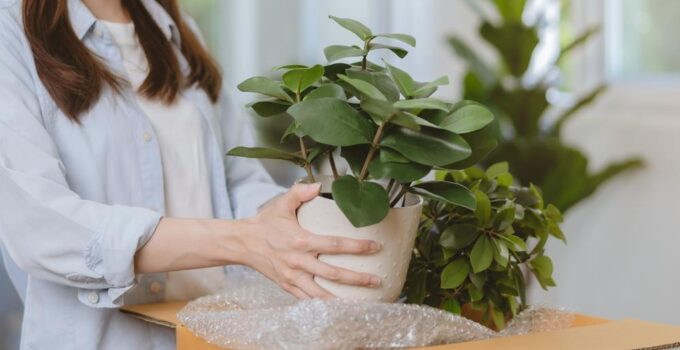At times, we spend a lot of money on plants from the nursery, but none of them survive or even make it beyond the first six to nine months.
However, there is a blunder that the vast majority of individuals make. They’re picking plants they like without considering their garden’s unique requirements. What’s the big deal here? Well, if you don’t think about the soil quality (is it dry as dust or full of construction debris?), the amount of sunlight each area receives, or the size of the available space, you’re probably going to choose plants that aren’t a good fit and won’t thrive.
When things go wrong in Dubai, it’s tempting to blame the gardener or the hot, humid environment, but in most cases, the true problem is that these crucial variables haven’t been adequately addressed.
Check Your Soil

Source: thespruce.com
In Dubai, the soil is mainly sandy, but there’s an important distinction to make. One kind of sandy soil is full of salt, whereas another type is called “sweet sand” after being rinsed clean. If your soil hasn’t been amended or renewed in the preceding several years, its nutrient content is likely to be deficient. Dig a hole twice as broad and deep as the plant you’re replacing, and then fill it with a new blend of sweet soil, potting soil, and fertilizer if you’re just replacing a few plants.
You should engage a professional to remove the old sandy soil and replace it with new sweet soil if you plan on renovating a large portion of your garden. You may be certain that you’re providing optimal conditions for the growth of your new plants in this manner.
Consider The Sun And Shade In Your Garden
Spend a few days observing your garden and writing down your findings. Take note of the early morning sun, the regions that stay in the sun all day, and the late afternoon sun. Keep in mind that not all plants thrive in the direct sunlight of a hot summer. If you have areas that get full sunlight for most of the day, you should consider planting desert-adapted plants there rather than tropical ones.
Fans of blooming plants should know that they typically need approximately 5-6 hours of sunshine for their favourite plants to blossom dependably. So, avoid planting blooming plants in sections of your yard that only receive a few hours of sunlight a day. Shade causes sun-loving plants to stretch and grow more spread out as they desperately seek light.
Think About How Much Space You Have

Source: telegraph.co.uk
Do the boundaries around your garden have enough room? One frequent oversight I see is border strips that are too small along the wall. Trees and bushes, you know, need some breathing space. They won’t flourish as you’d want if you confine them in a 30cm border, leaving no room for their roots to expand or their canopy to spread.
The ability to plant with more depth is yet another benefit of wider boundaries. The ability to ‘layer’ plants creates a more dynamic aesthetic in the landscape. Before you rush out to the nursery, it’s a good idea to think about how wide your borders need to be to accommodate the plants you want to purchase.
Be Realistic About The Quality And Quantity Of Ongoing Garden Maintenance You Are Willing To Invest In
When it comes to taking care of your garden, you have a few options. You can hire a professional and reputable garden maintenance company to keep your garden in tip-top shape year-round. Or, if you’re comfortable with it, you might choose to handle maintenance on your own, using occasional unskilled labour for tasks like watering and driveway sweeping.
If you’re planning to take the DIY route, it’s crucial to be realistic about your skills and the amount of time you can commit. On average, a small to medium-sized residential garden typically requires about 2-3 hours of professional maintenance per week. Some weeks or months, it might be less, and others more, but consistency is key if you want your garden to look great consistently.
Research Your Plants Beforehand

Source: cnn.com
Walk around your area and note the successful businesses and the ones that are struggling. Take photographs of your favourite plants as they thrive in your garden. Mark if they are basking in the sun all day, enjoying partial sun, or resting in the shade. Make a list of the things you like most. Find out how wide or tall these plants will grow to be so you know how much room to give them as they mature.
When designing your garden, it’s also a good idea to seek a wide range of cheap plants in Dubai. To make a dynamic and intriguing display, plants should range in size, density, and hue. Consider how these plants will appear next to one other and how they will enhance one another in the garden.
Think just how much water your plants will require. The United Arab Emirates (UAE) is home to flora from all over the globe, and these plants have varying needs when it comes to water. The desert rose, a succulent that prefers full sun, won’t do well if planted in partial shade next to a tropical plant that needs a lot of water. Because it is effectively drowning, the desert rose’s leaves may become yellow and fall off in such a situation. It may potentially die of root rot if conditions are bad enough. As a result, it is essential to learn the watering habits of each plant.
Conclusion:
Nurturing Your Garden with Informed Choices
In the world of gardening, success lies in thoughtful decisions, especially when venturing into the realm of online plant shopping. The allure of visually appealing plants must be tempered with a deep understanding of your garden’s unique needs. Before embarking on a virtual plant shopping spree, consider crucial factors like soil quality, sunlight patterns, available space, and your commitment to ongoing maintenance.
Online marketing has made plant acquisition convenient, but the key to thriving garden lies in pre-purchase research. Understand the intricacies of your soil – whether it’s sandy with salt content or nutrient-deficient “sweet sand.” Take note of sunlight and shade patterns, tailoring your plant choices accordingly. Reflect on the spatial requirements of your chosen greenery, ensuring they have ample room to flourish.







